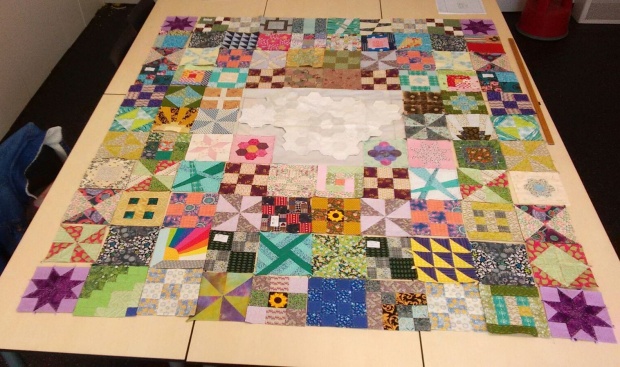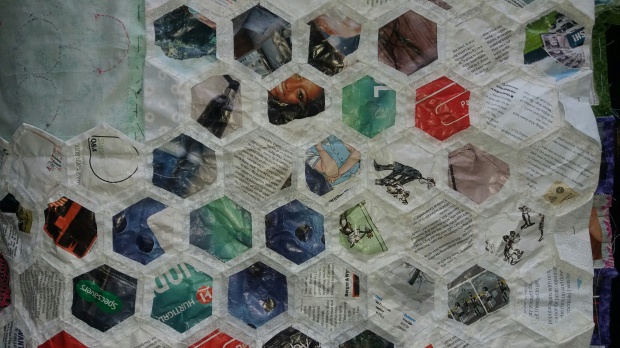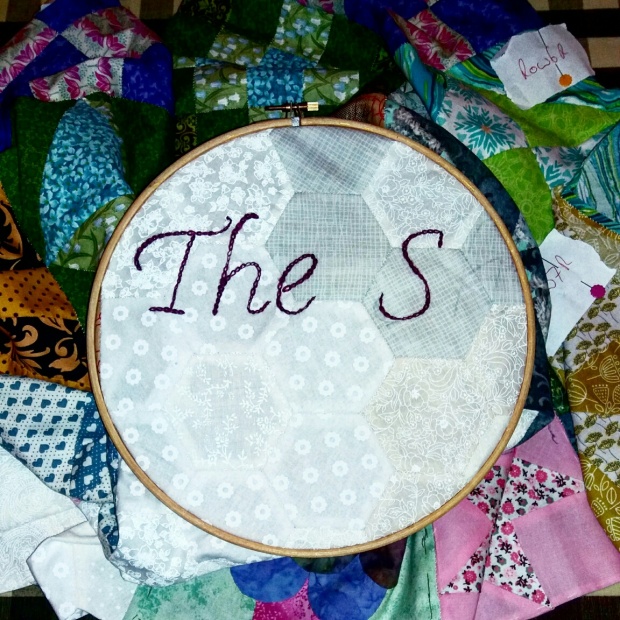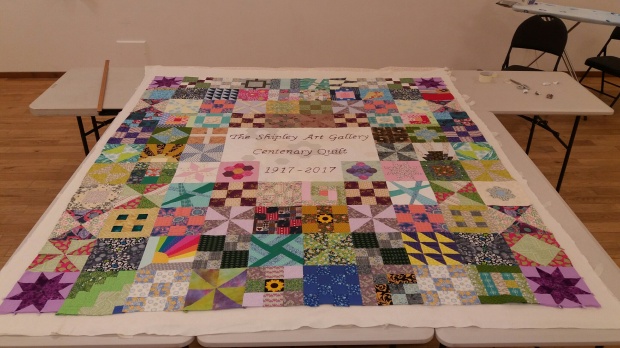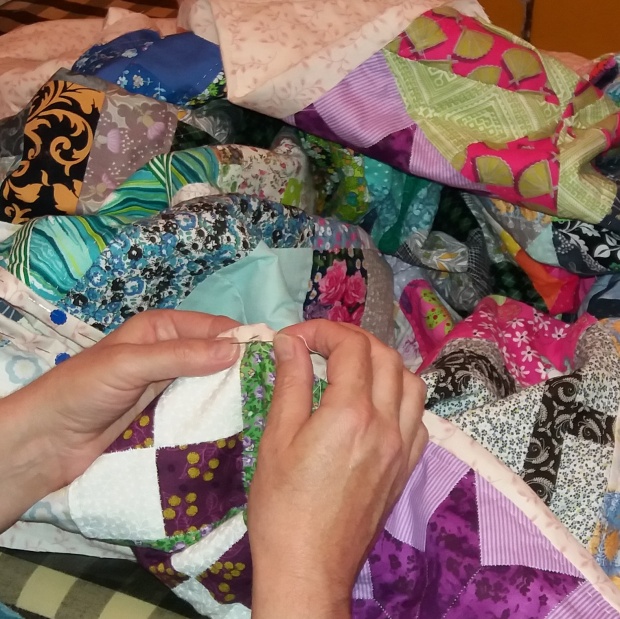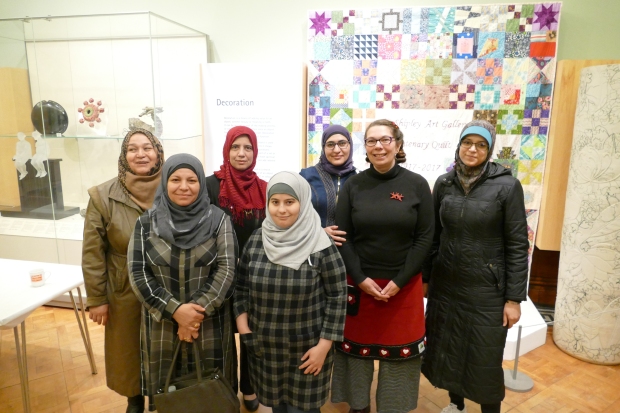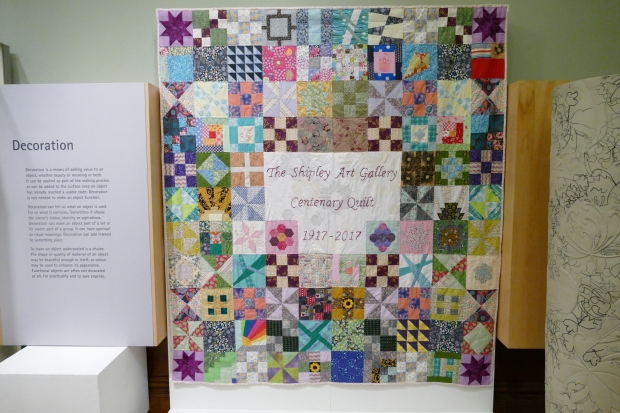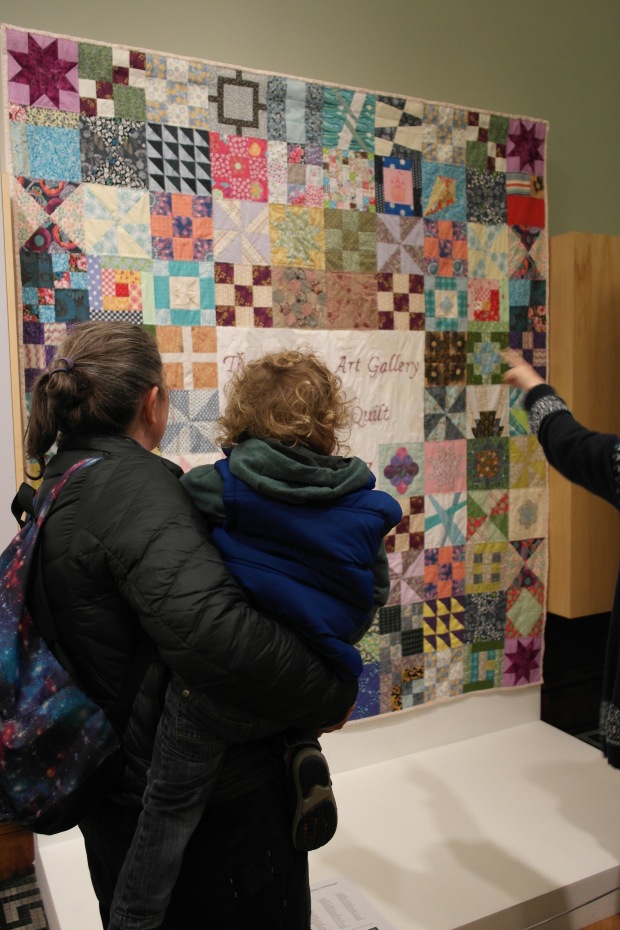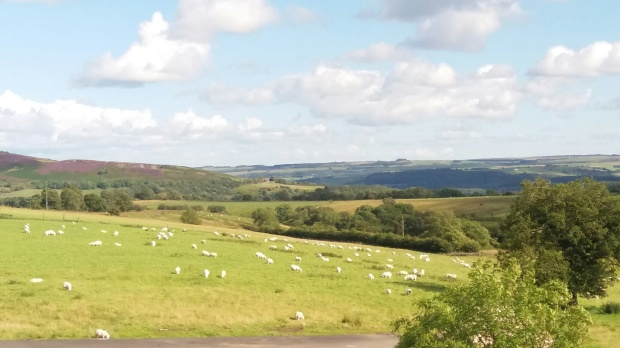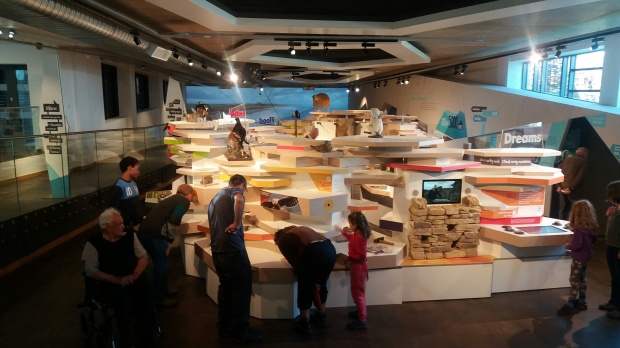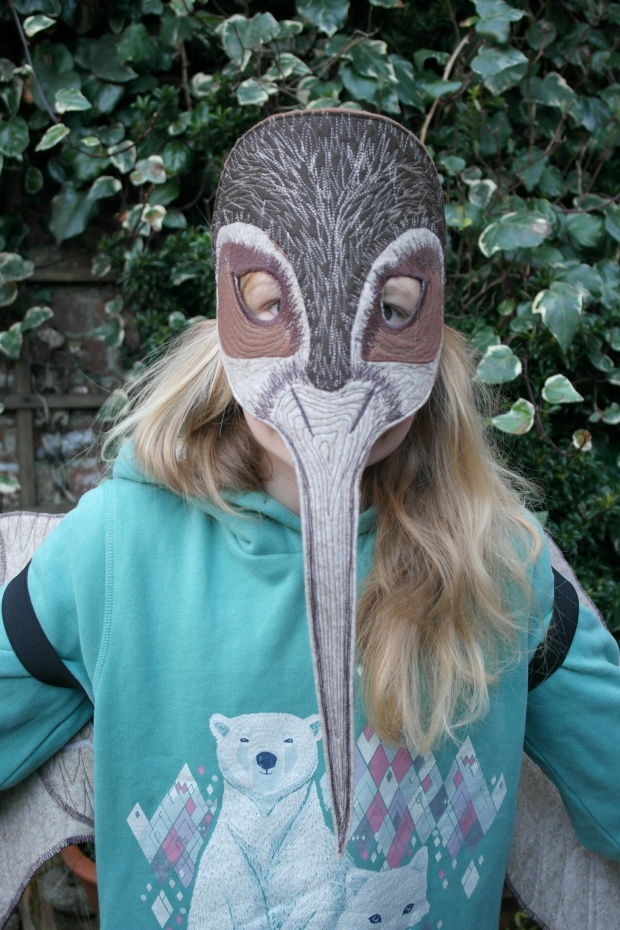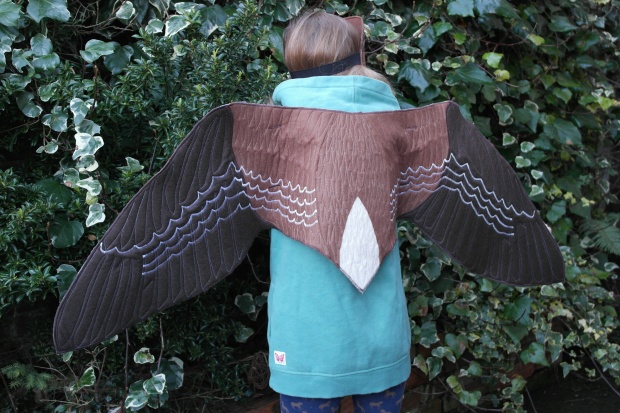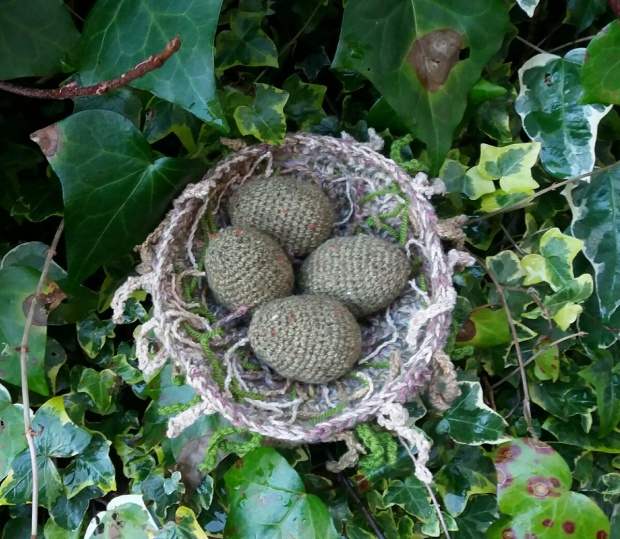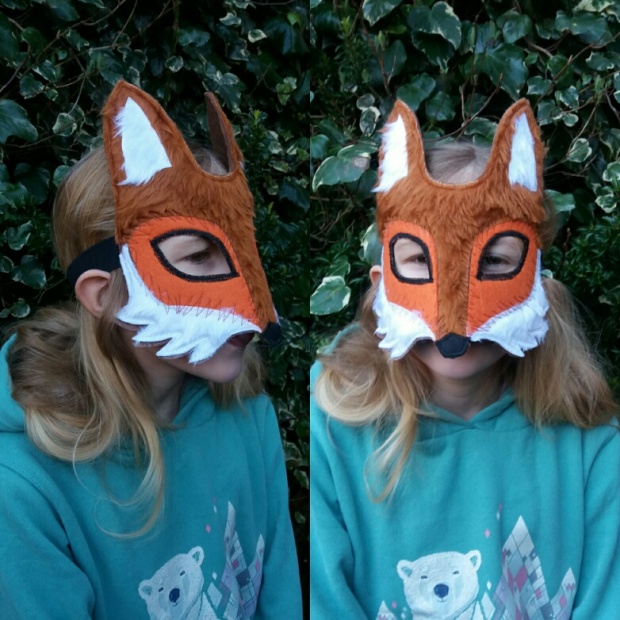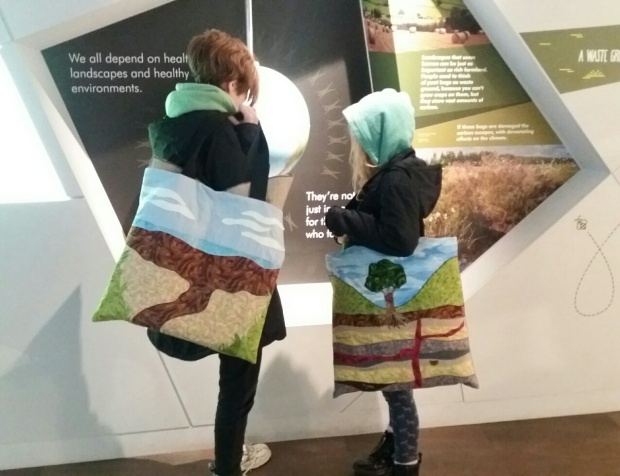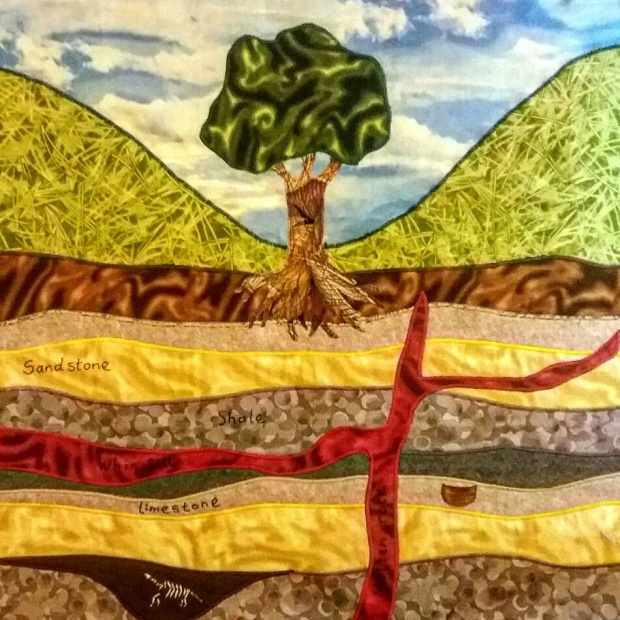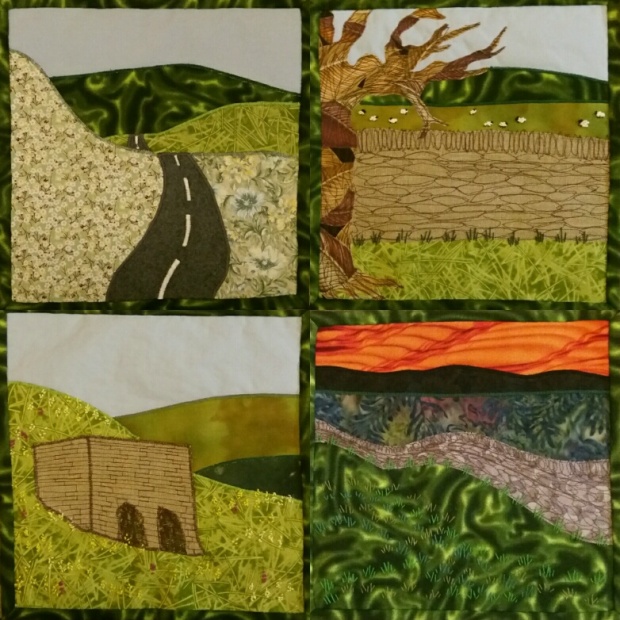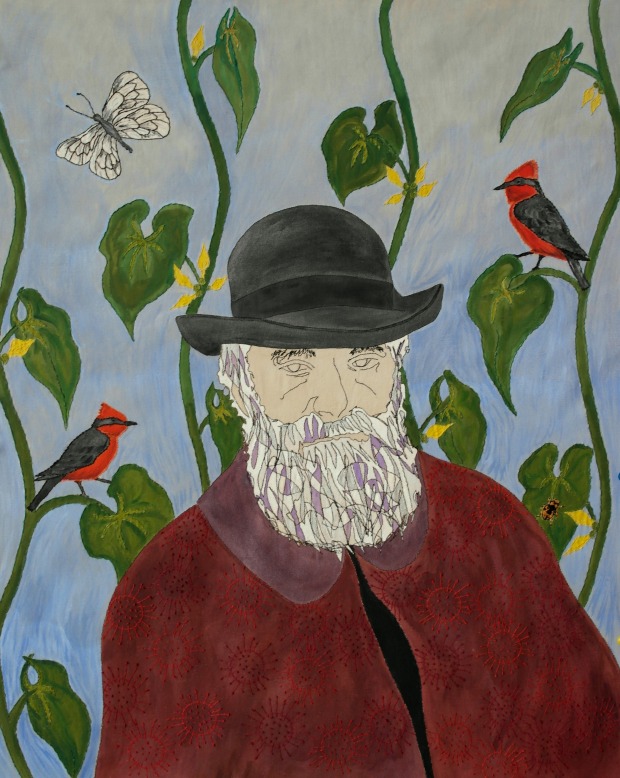
The Man from The Mount (Charles Darwin)
My textile portrait of Charles Darwin (1809-1882), is part of my series of ‘Cultural Hero’ portraits, including William Morris and W. G. Grace.
I chose Charles Darwin to be part of my series for many reasons including: he was a very cool naturalist, he had a great beard, he was born in Shrewsbury (where I am from) and he had a very interesting life! Simply, he has always been a hero of mine.
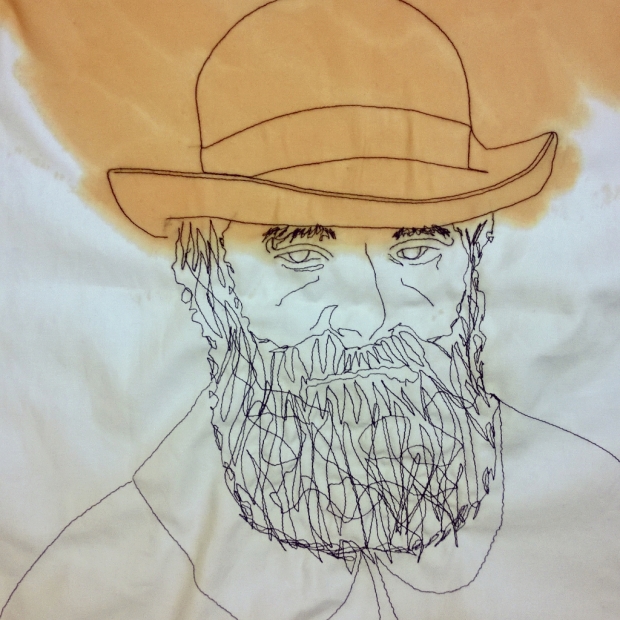
Charles Darwin portrait, first phase.
When I am working on a portrait, I never have a finished overall plan of how it is going to look. It evolves, over time as I am working on it. I tend to do quite a lot of background reading and like to find out more about the person, where they lived, so that I can drop in links to their background in the portrait. So when I first start, I machine sew the initial portrait onto white cotton, then paint it with tea!
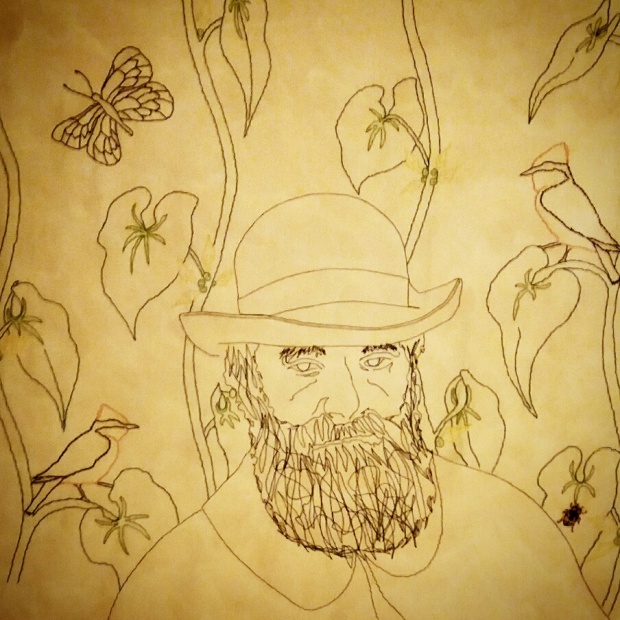
Charles Darwin, with hand stitched background.
The background was drawn on and hand sewn, it includes images of the Tatochila Theodice Gymnodice butterfly which he found 1834; Scymnobius Galapagoenis found in the Galapagos in 1831; the Vermillion Flycatcher, also found in the Galapagos and sundew heads, which are found near where he was born at The Mount, in Shrewsbury.
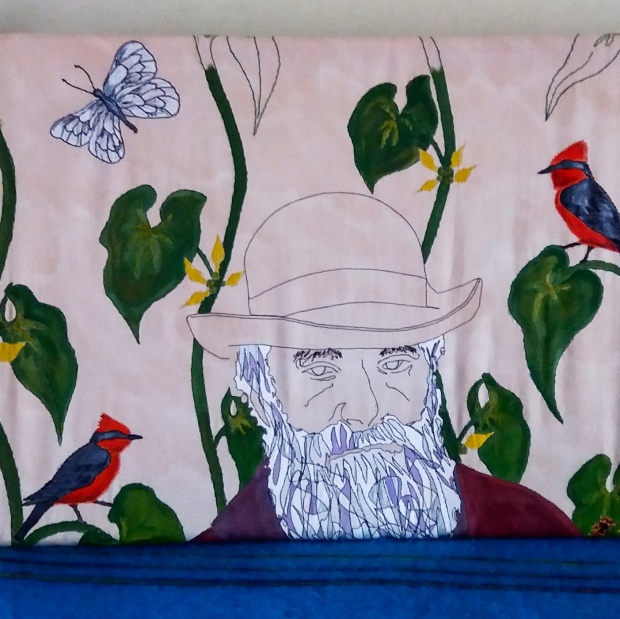
Working on a tapestry frame, hand sewing and painting the details.
Once the lines are stitched, I start to paint in with acrylic whilst working on a tapestry frame. This keeps the textile portrait taught, as I am not working on a canvas and the fabric would very easily start to shrink and stretch in all the wrong places.
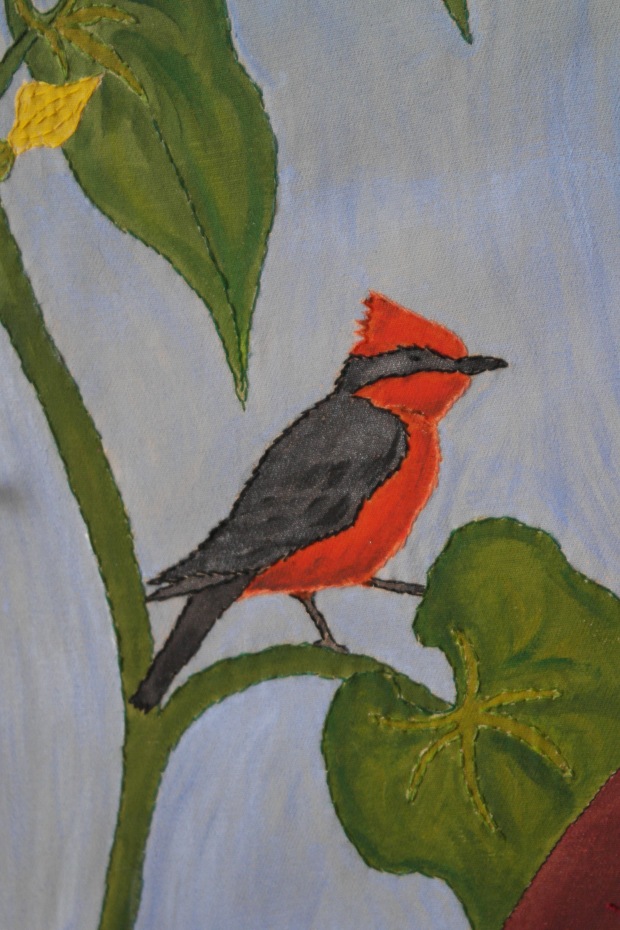
Vermillion Flycatcher, Charles Darwin portrait detail.
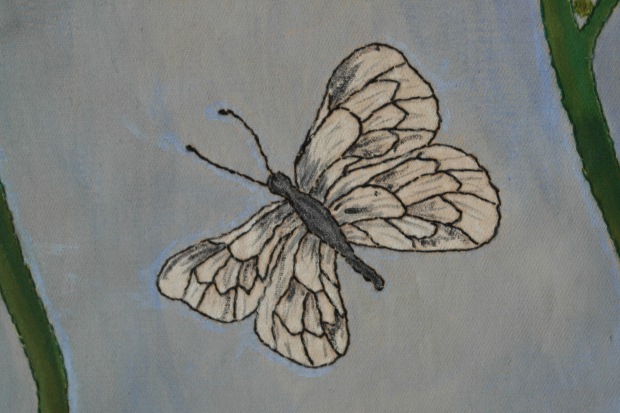
Tatochila Theodice Gymnodice. Found by Charles Darwin in Chile in 1834.
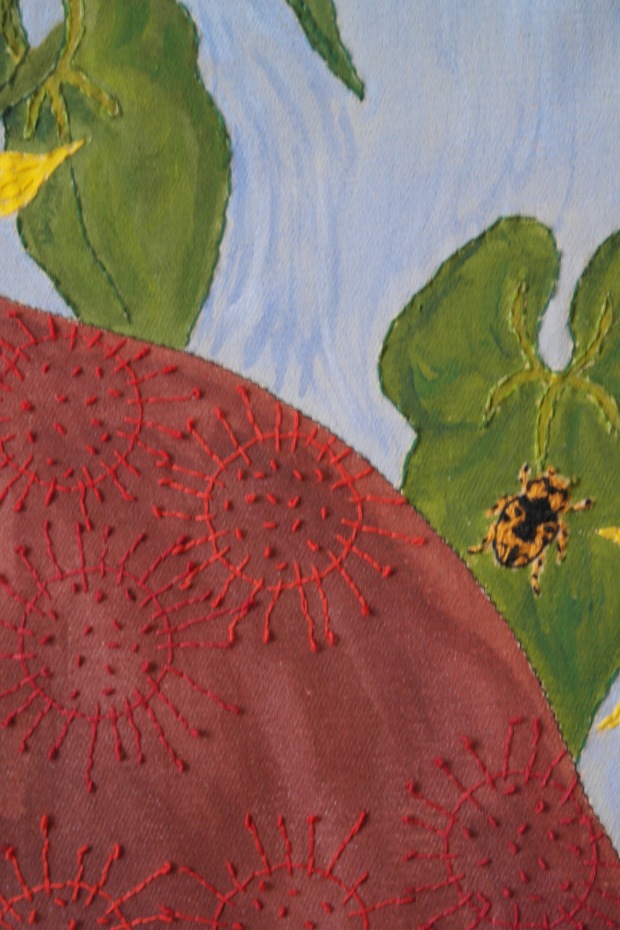
Detail showing the Scymnobius Galapagoenis (the Ladybug Beetle) and Sundew heads, embroidered onto Charles Darwin’s cloak.
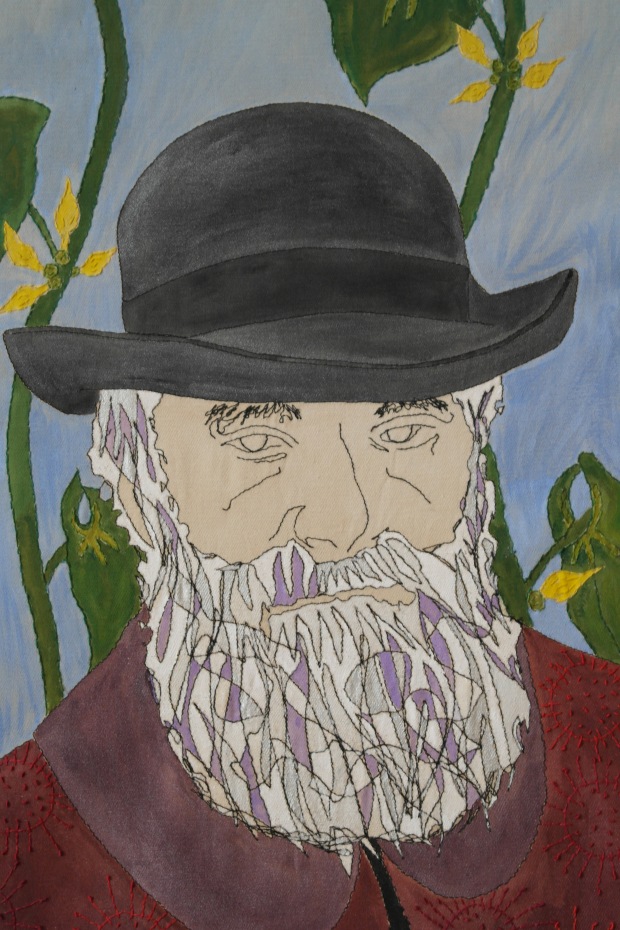
Detail from Charles Darwin portrait.
Since finishing my portrait of Charles Darwin, I have started again working on my portrait of the War Poet, Edward Thomas, which I hope to get finished by the middle of March, ready for the anniversary of his death during the First World War, on April 9th, 1917.


